Rehmat Ullah
FedFly: Towards Migration in Edge-based Distributed Federated Learning
Nov 02, 2021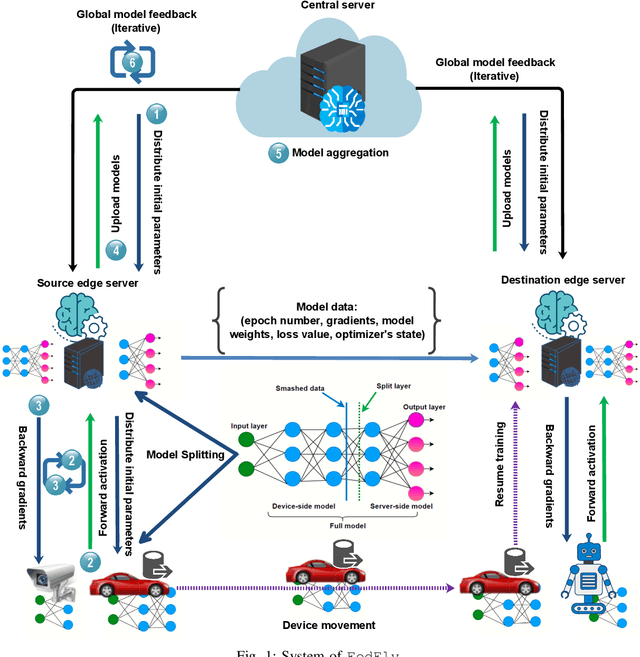
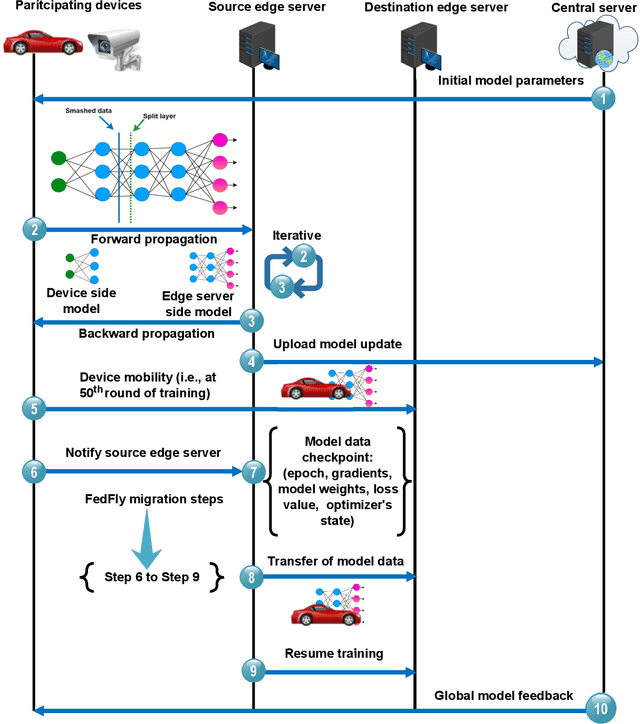
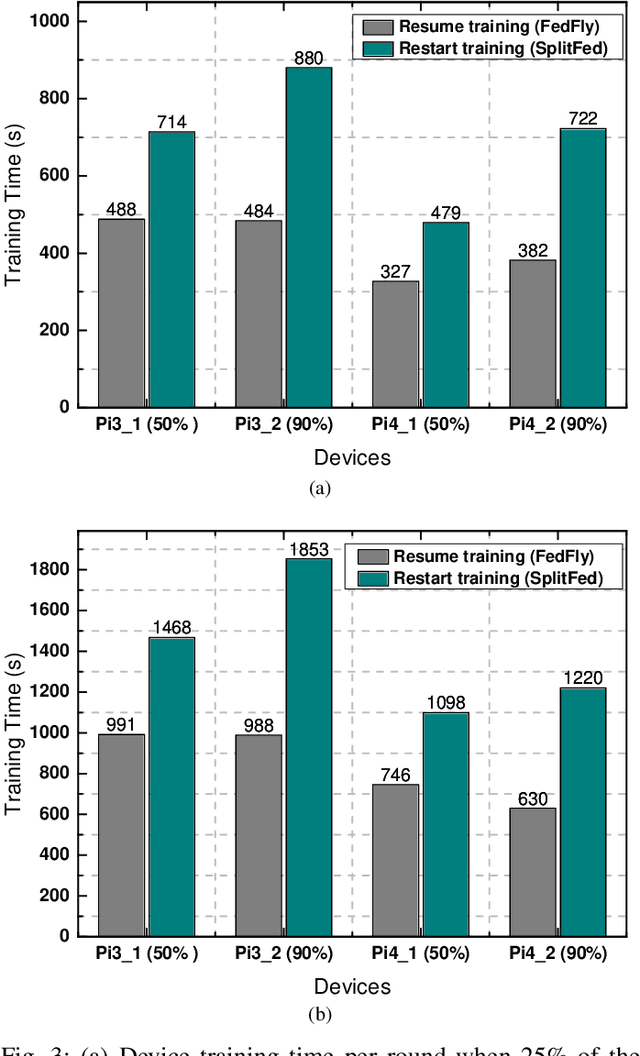
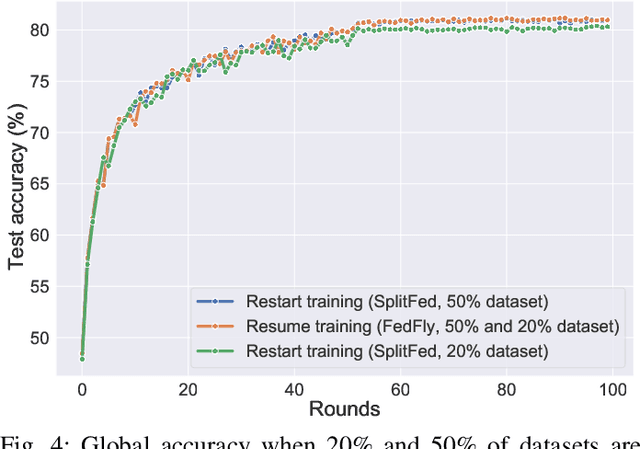
Abstract:Federated learning (FL) is a privacy-preserving distributed machine learning technique that trains models without having direct access to the original data generated on devices. Since devices may be resource constrained, offloading can be used to improve FL performance by transferring computational workload from devices to edge servers. However, due to mobility, devices participating in FL may leave the network during training and need to connect to a different edge server. This is challenging because the offloaded computations from edge server need to be migrated. In line with this assertion, we present FedFly, which is, to the best of our knowledge, the first work to migrate a deep neural network (DNN) when devices move between edge servers during FL training. Our empirical results on the CIFAR-10 dataset, with both balanced and imbalanced data distribution support our claims that FedFly can reduce training time by up to 33% when a device moves after 50% of the training is completed, and by up to 45% when 90% of the training is completed when compared to state-of-the-art offloading approach in FL. FedFly has negligible overhead of 2 seconds and does not compromise accuracy. Finally, we highlight a number of open research issues for further investigation. FedFly can be downloaded from https://github.com/qub-blesson/FedFly
FedAdapt: Adaptive Offloading for IoT Devices in Federated Learning
Jul 09, 2021



Abstract:Applying Federated Learning (FL) on Internet-of-Things devices is necessitated by the large volumes of data they produce and growing concerns of data privacy. However, there are three challenges that need to be addressed to make FL efficient: (i) execute on devices with limited computational capabilities, (ii) account for stragglers due to computational heterogeneity of devices, and (iii) adapt to the changing network bandwidths. This paper presents FedAdapt, an adaptive offloading FL framework to mitigate the aforementioned challenges. FedAdapt accelerates local training in computationally constrained devices by leveraging layer offloading of deep neural networks (DNNs) to servers. Further, FedAdapt adopts reinforcement learning-based optimization and clustering to adaptively identify which layers of the DNN should be offloaded for each individual device on to a server to tackle the challenges of computational heterogeneity and changing network bandwidth. Experimental studies are carried out on a lab-based testbed comprising five IoT devices. By offloading a DNN from the device to the server FedAdapt reduces the training time of a typical IoT device by over half compared to classic FL. The training time of extreme stragglers and the overall training time can be reduced by up to 57%. Furthermore, with changing network bandwidth, FedAdapt is demonstrated to reduce the training time by up to 40% when compared to classic FL, without sacrificing accuracy. FedAdapt can be downloaded from https://github.com/qub-blesson/FedAdapt.
An Experimental Analysis of Attack Classification Using Machine Learning in IoT Networks
Jan 10, 2021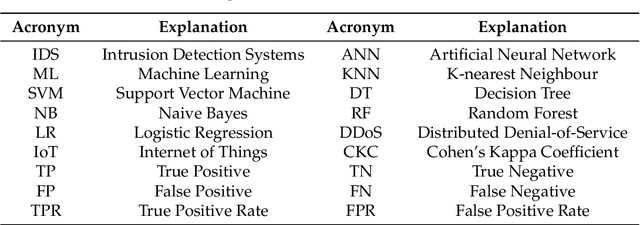


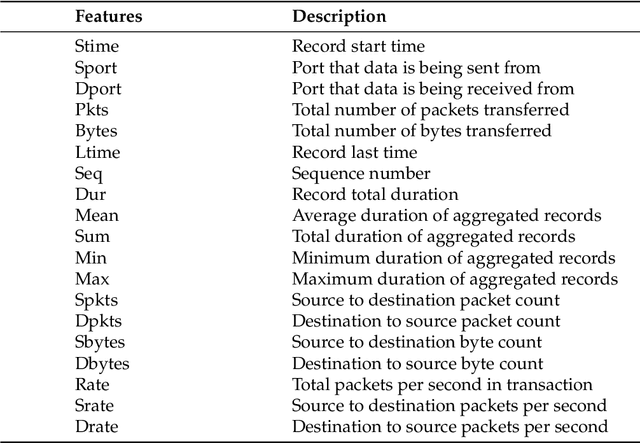
Abstract:In recent years, there has been a massive increase in the amount of Internet of Things (IoT) devices as well as the data generated by such devices. The participating devices in IoT networks can be problematic due to their resource-constrained nature, and integrating security on these devices is often overlooked. This has resulted in attackers having an increased incentive to target IoT devices. As the number of attacks possible on a network increases, it becomes more difficult for traditional intrusion detection systems (IDS) to cope with these attacks efficiently. In this paper, we highlight several machine learning (ML) methods such as k-nearest neighbour (KNN), support vector machine (SVM), decision tree (DT), naive Bayes (NB), random forest (RF), artificial neural network (ANN), and logistic regression (LR) that can be used in IDS. In this work, ML algorithms are compared for both binary and multi-class classification on Bot-IoT dataset. Based on several parameters such as accuracy, precision, recall, F1 score, and log loss, we experimentally compared the aforementioned ML algorithms. In the case of HTTP distributed denial-of-service (DDoS) attack, the accuracy of RF is 99%. Furthermore, other simulation results-based precision, recall, F1 score, and log loss metric reveal that RF outperforms on all types of attacks in binary classification. However, in multi-class classification, KNN outperforms other ML algorithms with an accuracy of 99%, which is 4% higher than RF.
 Add to Chrome
Add to Chrome Add to Firefox
Add to Firefox Add to Edge
Add to Edge